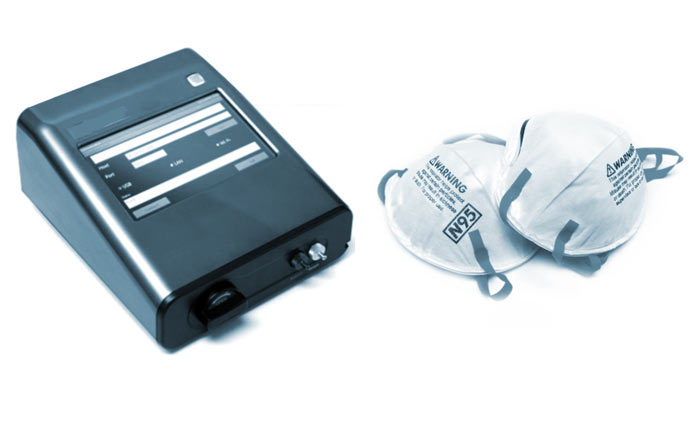WHAT IS QNFT?
Quantitative Fit Testing (QNFT) and Who Needs It
Respirators come in the form of disposable particulate filtration masks (ie. N95), half-face masks, or full-face elastomeric types. Different brands, models, as well as sizes can be chosen from. Respirators are designed to protect the user from exposure to various inhalation hazards, including vapors, fumes, toxic gases and particulate matter. However, a respirator can only perform this function if it fits tightly against the wearer's face and creates a protective seal.
What is a Fit Test?
A fit test can determine an appropriate fit of a given type for an individual. A fit test should be completed prior to the initial use of a respirator and every two years afterwards, in accordance with CSA standard z94.4, 9.16. If you switch to a different make or model of respirator, or experience significant changes to your facial structure (ie. significant weight gain/loss or dental work) then you will be required to be fit tested again.
QLFT vs QNFT
There are two different methods for conducting a fit test: qualitative fit tests (QLFT) and quantitative fit tests (QNFT). The main difference between the two is that a QLFT relies on a person’s sense of smell or taste to determine the fit, while a QNFT test measures the actual difference in particles in the test atmosphere versus that inside the wearer’s mask to determine its fitness in a particular environment.
Qualitative Fit Testing (QLFT): Less Reliable
A qualitative fit test (QLFT) is a rudimentary pass/fail test for a respirator. To perform this test, a hood is worn by the participant, who is then exposed to a noxious substance to assess the adequacy of respirator fit. This relies entirely on the individual’s sensory detection of the test agent.
The only advantage of a QLFT is that it is an inexpensive measure; simple in its determination of brand and respirator size for the user. However, a QLFT cannot determine the limit of protection-factor or numerical results. There is also the probability of user deception.
Quantitative Fit Testing (QNFT): Accurate and Efficient
Unlike a Qualitative test, a Quantitative test relies on a machine called a Portacount that draws from the respirator via a tube to detect leakage into the mask.
A QNFT test gives a numerical result called the fit factor. Quantitative fit testing has the added feature of being able to test full-face respirators, as well as half-masks and N95s.
Tried and Tested
FRONTLINE FIT TESTING conducts Quantitative Fit Testing. Besides the obvious advantages of QNFT, we prefer this method because it allows us to pinpoint where a respirator fit may be failing and how simple adjustments can often make major differences. This assist our clients in determining the safe and accurate fit that is appropriate for them, without all the anxiety and inconvenience.
Workers using respiratory protective equipment such as an N95 need to be fit tested every two years. Ensure your staff are safely covered. Choose the FRONTLINE solution for frontline demands!
